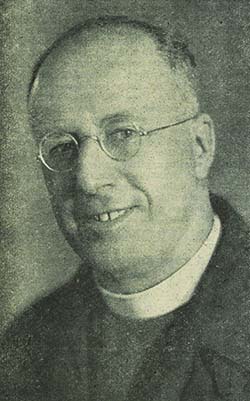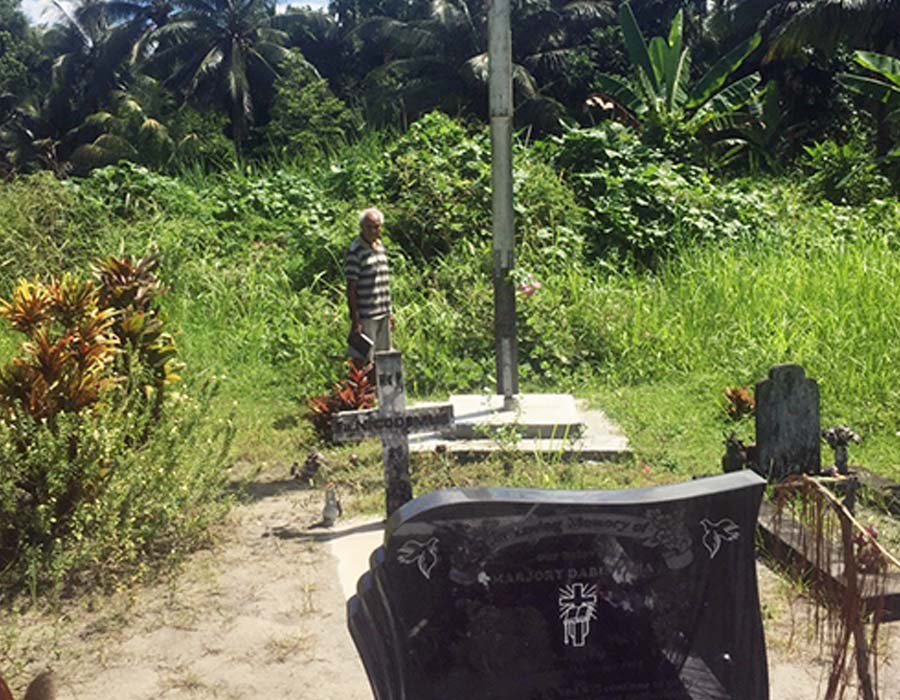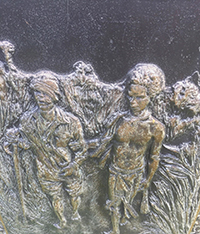A Trip to Gona
Popondetta is not much of a tourist town. It has few natural attractions. It’s dirty, usually noisy and fairly loud. It is a market and supply town of about 19000 people and the Capital of the Northern Oro Province in PNG.
I was there because I was staying at the nearby Newton Theological College, the national college for training clergy for the Anglican Church of PNG. Over stay of a few weeks, I had learned where to shop in Popondetta, although I was rarely there by myself; security is always an issue in PNG towns. But I had learnt where to get my few supplies, and had become adept at sidestepping the bright red splatters of betel nut juice that coloured the roadsides and what passes as footpaths.
I had come to understand that, if something you wanted was in one of the shops, then it was best to buy it then and there, as there was no certainty about what might be in stock in a day or two. I had been accustomed to catching the PMV (Public Motor Vehicle – nothing at all like Australian public transport), with all my “plastics” (plastic bags) of provisions and to make my way back to the college for the next few days until the lack of refrigeration meant that another trip to town was needed.
But this trip into Popondetta was not a provisioning one. I was making something of a pilgrimage and it was a pilgrimage of a double kind.
Most clergy from the Diocese of Canberra and Goulburn, and many others throughout the Australian Church, know the story of James Benson, a priest and missionary in Gona at the beginning of the war in the Pacific and presumed during the war to be one of the New Guinea Martyrs. He turned up in September 1945, having been held in two prison camps and being used for a while as a translator, emaciated but alive. He eventually died in 1957. His missionary companions at Gona did not survive. May Haymen, a nurse initially from Adelaide who had also nursed in Melbourne, Dubbo and Canberra, and Mavis Parkinson, a teacher, from Ipswich, retreated into the bush but they were betrayed and killed near Popondetta.
James Benson had been a member of the Community of the Ascension, based at the old Bishopthorpe in Goulburn. I was wearing a replica of a brothers’ cross found at Bishopthorpe, identical to that worn by James Benson, and presented to me on my consecration as a bishop. The cross made a link across the years to this missionary-priest.
The story of Benson and his co-workers, and that of the other New Guinea Martyrs, drew me to Gona, as did the place this beachside village played in the battle for New Guinea. People often pass through Popondetta on the way to Kokoda and the Kokoda track. But the Kokoda story really opened and closed at Gona and nearby Buna … the “bloody beaches” as they came to be called.
It was on these beaches that the Japanese invaded with their strategy of a land attack on Port Moresby. Although it was a place of high attrition fighting, Gona is often overlooked in modern-day commemorations. I wanted to go there, and family connections with the war in PNG fed the desire.
I was accompanied by Fr Luscom Bera, a lecturer from Newton College whose family village is near Gona and, having travelled into Popondetta, we found the Gona PMV. It was a three tonne truck with plank seating down each side of the tray and an ill-fixed tarp over the top. It was rated for 25 passengers, a number that is really only relevant in these parts by the extent to which it is exceeded.
Being the only waitpella (white fellow) on the PMV accorded me the privilege on a seat somewhere near the middle of the tray, where (I was assured) there would be less bumps. My guide and I took our places in an already full truck, placing our feet carefully between plastic containers of diesel vaguely sealed with “plastics” (supermarket bags), a couple of spare tyres, bunches of bananas, betel nuts and other cargo. The truck looked pretty full to me, but we made one or two more stops in Popondetta before leaving town with the back of our PMV bulging and our legal load limit exceeded by an additional ten or a dozen bodies accommodated in one contorted way or another.
There is no easy way to Gona. In fact, we were going to the old village of Gona, a few kilometres away from the settlement that would be called Gona after the arrival of the missionaries. Then we would make a 20-minute walk along the beach to the town now called Gona, where the local church would welcome us and show us around.
Soon after leaving Popondetta we left the main road and began to zig-zag along the rough tracks that serve the palm oil plantations, which extend nearly all the way to the coast. It was a bum-breaking trip. The PMV lurched, crunched, and weaved its way as I adjusted my backside and held on.
About half way to Gona we encountered a funeral party, coffin by the roadside, who negotiated to join our journey. Showing typical PNG enthusiasm, with advice and orders from just about everyone involved, the coffin was hoisted onto the already crowded PMV floor. It was a home-made job, constructed out of half-inch ply, and clearly rushed through for the occasion. The brown lacquer on the outside was still very wet to the touch. The mourners attached themselves in various ways to the PMV and we lurched our way forward. The occasional clinging outrider passenger fell off and ran along behind until we slowed down enough for him to re-attach.
None of this seemed in the least bit remarkable for anyone other than the one waitpella in the back and when we finally reached the beach at Old Gona, people scattered with an air of going about their usual business.
Gona beach is beautiful. Black sands, lapping waves, palm trees, no development. I could imagine that one day a resort would lure tourists to this place, but on this day it was in its natural state. As we walked along the beach we could see in the distance the headland where parts of the wreck of a Japanese transport, the Ayatosan Maru, can be seen still at low tide. We passed the occasional palm-thatched house, pausing for greetings. Pikininis frolicked in the shallows.
And so we came to where the Anglican Mission at Gona once had stood. There is little left on the site. The original cross stands near an overgrown mound that we were told was all that was left of the mission Church. The Cross was shot up by the invaders and the bullet holes are still there for inspection. A stone monument nearby (made in Adelaide, I noticed) tells the story of battle and the many lives lost. A Pisin inscription talks about two peoples “standing together” and there is a brass casting of an Australian Private, George “Dick” Whittington, aided by Papuan orderly, Raphael Oimbari (pictured below). Above the picture are the words, “May our friendship be everlasting”.
An elderly local guide, pointed out where Fr Benson’s house had been, and how he would walk over to the hospital where Sister May Hayman, worked, and in the opposite direction, to the school, where Mavis Parkinson taught. Nearly all of the old mission site had returned to bush and, apart from the simple memorials, there were few physical signs of love and blood that had flowed.
The memories were there, however, in the people. The parish is now called Holy Cross, a name inspired by the Cross shot up during the fighting. The second parish Church is back from the beach, a small open air church that showed signs of much use and love. There is a parish primary school nearby and the sound of children playing during the lunch-break filtered the sounds of the future into a place laden with memories of the past.
Then we went to the Church and I was shown the place where James Benson’s ashes were kept, along with his cross – identical to the one I was wearing, except, I was told, that the James Benson cross was green with corrosion. It was a moment of deep connection and we paused for quiet and prayer.We sat in shelter and had a simple lunch; some kau kau (sweet potato), pineapple, slices of cucumber and some “flours” – pieces of damper. It was good to listen to their stories and to share a prayer.
Then it was time to move back under the trees to say our farewells, pray a final blessing, and prepare for another chaotic PMV trip back to Popondetta.
– Jeffrey Driver

The Rev James Benson 1945. © ABM

The site of the first Church at Gona. The Wooden Cross is all that remains, and still has bullet holes from the Japanese invasion. The current Church of the Holy Cross is a little further inland. © Jeffrey Driver, 2018.
